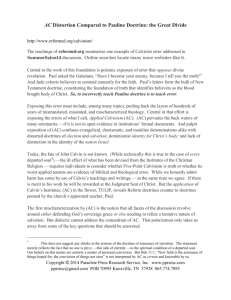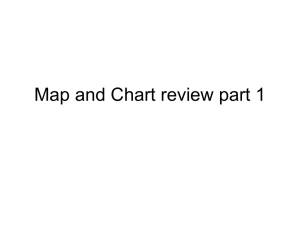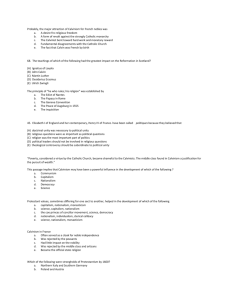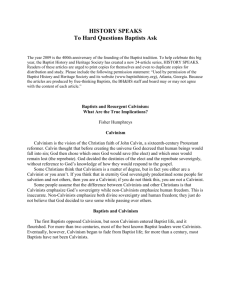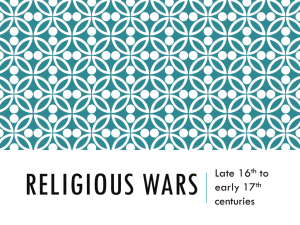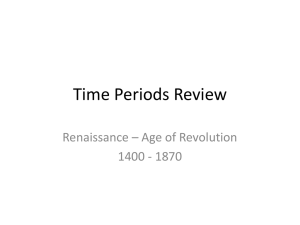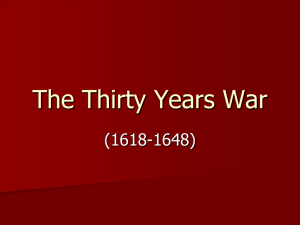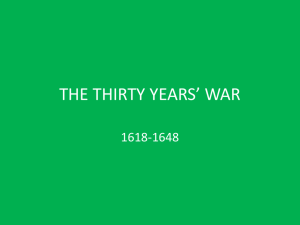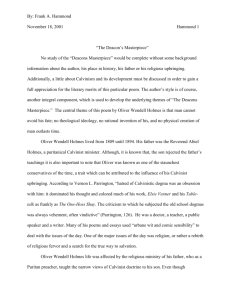Christian Denomination Assignment: Calvinism Broad History of
advertisement
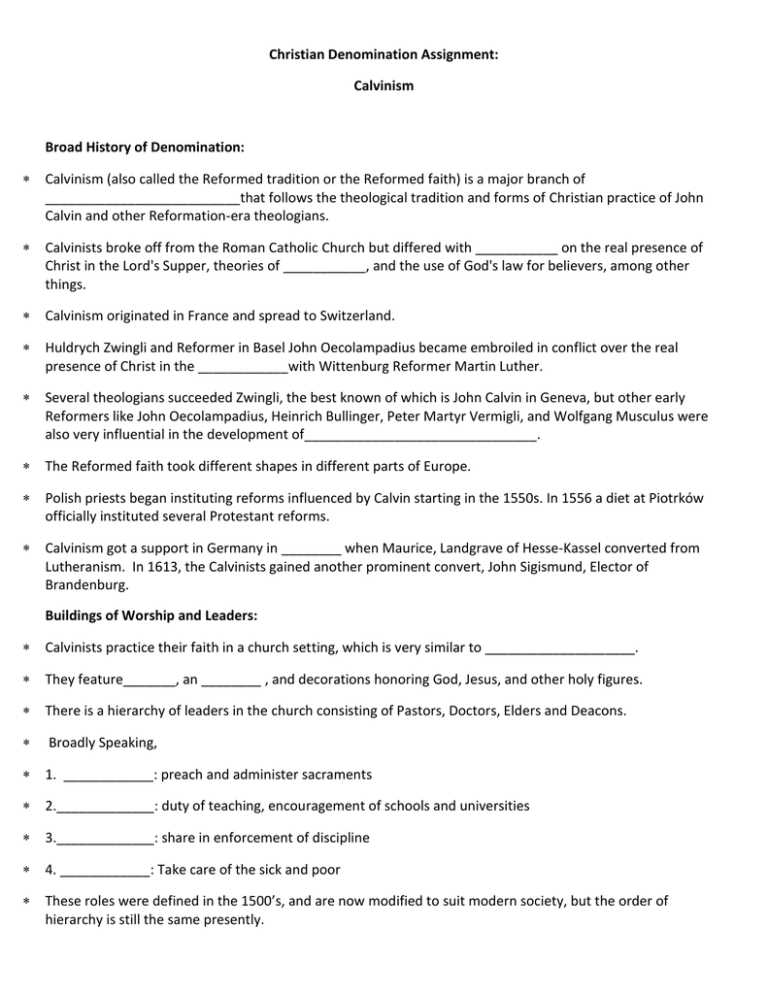
Christian Denomination Assignment: Calvinism Broad History of Denomination: Calvinism (also called the Reformed tradition or the Reformed faith) is a major branch of __________________________that follows the theological tradition and forms of Christian practice of John Calvin and other Reformation-era theologians. Calvinists broke off from the Roman Catholic Church but differed with ___________ on the real presence of Christ in the Lord's Supper, theories of ___________, and the use of God's law for believers, among other things. Calvinism originated in France and spread to Switzerland. Huldrych Zwingli and Reformer in Basel John Oecolampadius became embroiled in conflict over the real presence of Christ in the ____________with Wittenburg Reformer Martin Luther. Several theologians succeeded Zwingli, the best known of which is John Calvin in Geneva, but other early Reformers like John Oecolampadius, Heinrich Bullinger, Peter Martyr Vermigli, and Wolfgang Musculus were also very influential in the development of_______________________________. The Reformed faith took different shapes in different parts of Europe. Polish priests began instituting reforms influenced by Calvin starting in the 1550s. In 1556 a diet at Piotrków officially instituted several Protestant reforms. Calvinism got a support in Germany in ________ when Maurice, Landgrave of Hesse-Kassel converted from Lutheranism. In 1613, the Calvinists gained another prominent convert, John Sigismund, Elector of Brandenburg. Buildings of Worship and Leaders: Calvinists practice their faith in a church setting, which is very similar to ____________________. They feature_______, an ________ , and decorations honoring God, Jesus, and other holy figures. There is a hierarchy of leaders in the church consisting of Pastors, Doctors, Elders and Deacons. Broadly Speaking, 1. ____________: preach and administer sacraments 2._____________: duty of teaching, encouragement of schools and universities 3._____________: share in enforcement of discipline 4. ____________: Take care of the sick and poor These roles were defined in the 1500’s, and are now modified to suit modern society, but the order of hierarchy is still the same presently. Some famous Calvinist pastors would be _________________and John Piper. Geographic Location of Denomination: Beginning of Calvinism John Calvin began the religion Calvinism which originated in___________. La Rochelle was Frances largest Protestant city. In 1626-1629 the King ordered the French to attack La Rochelle, in an attempt to exterminate all Protestants. The French military over powered La Rochelle, and ended in the city surrendering. In 1573, France permitted La Rochelle as one of the three cities in France that were allowed to practice the Protestant faith under very strict conditions due to the_____________________________. The French King ______________felt France should be united as a whole, and by doing that he felt the country should be of one religion. In 1685 King Louis XIV kicked out all Protestants out of France, which began the spread of Calvinism. The Spread of Calvinism Once King Louis XIV kicked all Protestants out of France, the spread of Calvinism began_____________. Calvinism had already started its roots in __________due to the close relationship of France and Scotland at the time, being allies. Calvinism spread through the lower countries of Europe at the time when the King of Spain had stepped down, and the citizens felt that their countries couldn't meet their needs. Calvinism and other Protestant religions cooperated to meet the demands of the people in the __________countries. Calvinism had spread through all of Northern Europe. _______________shortly after the spread throughout Northern Europe was largely colonized by Calvinist who were Black Loyalist, people who fought for British in the American War of Independence. Calvinism Recent Geographic Existence The largest colonies in 19th and 20th century were by missionaries in Indonesia, Korea and Nigeria. Today, the major areas where Calvinism is found are__________, China, and ___________. Protestantism today is practised worldwide. Major Internal/External Conflicts Divisions within Calvinism: - _________________ - _________________ - _________________(New Calvinism) New Calvinism: - Is the growing perspective within conservative____________________. As well as trying to be relevant in present day. - New Calvinists seek to contextualize the gospel of truth to make it relevant to the modern world. - Major Figures: - John Piper - Mark Driscoll - Al Mohler - Mark Dever - C.J Mahaney - Joshua Harris - Tim Keller Internal Conflict: - Article written by Todd Billings of the perspective from the Old Calvinists on the Neo Calvinists. - Problems: -Not ____________Enough. -Not sacramental enough. -Not ___________enough. - Old Calvinism was fearful of the other Christians and did not accept them for their denomination, so they burned bridges between them. The Neo-Calvinists seek to build bridges between them and other denominations because they are more accepting of other Christians. External Conflict: - In the 16th and 17th centuries there were members on the Protestant Reformed Church of France, called Huguenots. - _____________were inspired by the writings of the founder, John Calvin. - 500,000 Huguenots fled France during a series of religious persecutions, lead by King Louis XIV. - The Huguenots relocated to areas such as, England, _______, Scotland, Denmark, _________, and Switzerland. - King Louis tried to convert the Huguenots to Catholicism. First, he sent in missionaries to convert them with a financial reward. Then, He closed their ____________and banned them from favoured professions. When nothing worked he tried to forcibly convert them by using armed soldiers to loot their houses. - Most of the French Huguenots were forced to convert to Catholicism because they did not want to emigrate, or were unable to. Mark Driscoll and Differences between Neo and Old Calvinism: - Mark Driscoll is an American pastor and author who explains the differences between Old Calvinism versus Neo Calvinism. - Old Calvinism was cessationistic and fearful of the presence and____________________________. Neo Calvinism is continuationist and joyful in the presence and power of the Holy Spirit. - Old Calvinists were suspicious of other Christians oppose to Neo Calvinists who are accepting of other Christians. Major Differences from Catholicism: Predestination Calvinists believe in the concept of predestination, meaning God has selected who will and who will not be brought to________________. Their belief is even strongly practicing Calvinists who live without sin will still not go to heaven unless they are predestined by God, taking away the ____________of salvation. This differs from Catholicism as we believe God wants all of us to go to heaven, but give us the free will to accept or decline the offer. Apostolic Succession Calvinists believe there is no apostolic succession, meaning there is no ____________________or pope. Interpretation of Scripture Calvinists believe Catholics have ___________________many scriptures in the bible and have altered many of the interpretations. In Catholicism, no one may ever correct the church, even with official doctrines to change the interpretation of scripture. The Schism Calvinism was split from the Catholic Church during the _________________in the early 16th century. The belief of predestination was a large cause of the schism between them and the Catholic Church, as their view on salvation is so different. The belief of no supreme authority/apostolic succession separated them from Catholicism because the Catholic Church is based around the Pope and___________. Lastly the different interpretations of scripture were a cause of the schism, because the interpretations did not agree with each other. Vatican II and Dialogue The goals of Vatican II can be applied to Calvinism by looking at what _________us (Catholics) with Calvinists instead of looking at our differences. We may not have the same exact beliefs as Calvinists, but we do share many things in common such as the belief of______, ________, the Holy Spirit and many of our values. We should respect these beliefs and view them in a positive manner, like we would with the basic rules of_____________.
